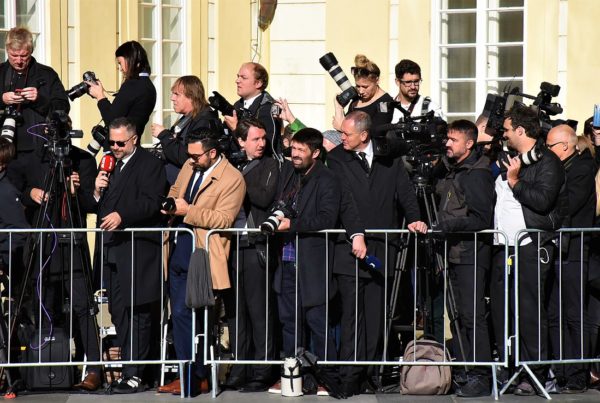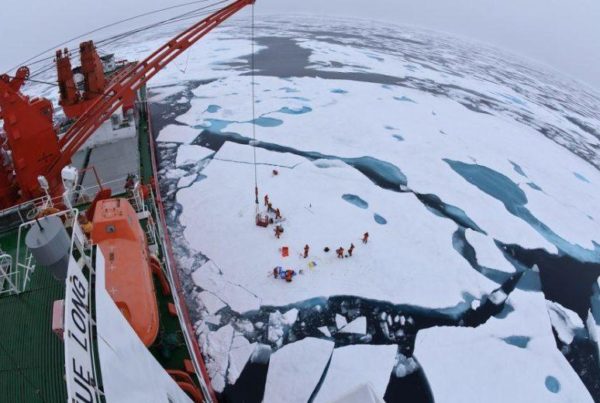By R. James Woolsey, William R. Graham Henry F. Cooper, Henry Cooper, Fritz Ermarth and Peter Vincent Pry
(© National Review, February 12, 2016. Used with Permission)
Naïve reliance on their transparent disavowals could end up costing millions of American lives. North Korea launched its second satellite on Saturday, yet the national press continues to ignore this existential threat.
The White House has not recognized that a nuclear-armed North Korea has demonstrated an ability to kill most Americans with an electromagnetic-pulse (EMP) attack. And White House spokesmen and the media have misled the public with unjustified assurances that North Korea has not yet miniaturized nuclear warheads for missile or satellite delivery.
We, who have spent our professional lifetimes analyzing and defending against nuclear-missile threats, warned years ago that North Korea’s Unha-3 space launch vehicle could carry a small nuclear warhead and detonate it a hundred or so miles over the United States to create an EMP, leading to a protracted nationwide blackout. The resulting societal chaos could kill millions.
Indeed, the trajectory and altitude of North Korea’s last satellite orbited three years ago, the KSM-3, could have evaded detection by U.S. missile-tracking radars in its initial orbit and evaded interception by our National Missile Defense, exposing the 48 contiguous United States to an existential EMP attack.
Last year, Admiral William Gortney, commander of North American Aerospace Defense (NORAD), acknowledged the nuclear-missile threat from North Korea:
On April 7, 2015, he warned that North Korea has mobile intercontinental ballistic missiles (ICBMs) called KN-08, armed with nuclear warheads, that can strike the U.S. mainland. He revealed that critical assets hardened against EMP are moving back into an underground command post inside Cheyenne Mountain at a cost of $700 million.
On October 8, 2015, he warned the Atlantic Council:
I agree with the intelligence community that we assess that they [the North Koreans] have the ability, they have the weapons, and they have the ability to miniaturize those weapons, and they have the ability to put them on a rocket that can range the [U.S.] homeland.
Iran is also being underestimated as a nuclear-missile threat. The press accepts Obama-administration assertions that its recent nuclear deal will keep Iran from developing nuclear weapons for a decade. The administration and the press both celebrate Iran’s shipping of enriched uranium to Russia and its filling the core of the Arak plutonium reactor with cement. We are supposed to believe that these acts signify Iran’s good faith, and that the nuclear deal is working. We do not.
Apparently forgotten are North Korea’s equally dramatic gestures to deceive President Bill Clinton while cheating on his “nuclear deal” called the Agreed Framework. North Korea stopped its Yongbyon plutonium reactor, allowed the United Nations to install cameras and seals to monitor nuclear activities, and acceded to virtual occupation of Yongbyon by U.N. inspectors. All the while, North Korea’s clandestine underground nuclear-weapons program continued unimpeded — indeed, its nuclear weapons existed before the Agreed Framework was signed.
The Congressional North Korea Advisory Group saw through this deception and warned that the Agreed Framework was not working. But while North Korea developed long-range missiles and nuclear weapons, President Clinton and the press preferred to believe otherwise.
Iran is following North Korea’s example — as a strategic partner allied by treaty and pledged to share scientific and military technology. Iran sacrificed its overt civilian nuclear program to deceive the Obama administration, to lift international sanctions, to prevent Western military action, while a clandestine military nuclear program no doubt continues underground. That is why Iran, under the nuclear deal, will not allow inspection of its military facilities and prohibits interviewing scientists — it is concealing the dimensions and status of Iran’s nuclear-weapons program.
We assess, from U.N. International Atomic Energy Agency reports and other sources, that Iran probably already has nuclear weapons. Over 13 years ago, prior to 2003, Iran was manufacturing nuclear-weapon components, like bridge-wire detonators and neutron initiators, performing non-fissile explosive experiments of an implosion nuclear device, and working on the design of a nuclear warhead for the Shahab-III missile.
Thirteen years ago Iran was already a threshold nuclear-missile state. It is implausible that Iran suspended its program for over a decade for a nuclear deal with President Obama.
Read more at: http://www.nationalreview.com/article/431206/iran-north-korea-nuclear
(Ambassador R. James Woolsey, former director of central intelligence, is the chancellor of the Institute of World Politics and the chairman of the Leadership Council of the Foundation for Defense of Democracies; William R. Graham was President Reagan’s science adviser, and acting administrator of NASA, and is the chairman of the Congressional EMP Commission; Ambassador Henry Cooper was the director of the Strategic Defense Initiative and chief negotiator at the Defense and Space Talks with the USSR; Fritz Ermarth was chairman of the National Intelligence Council; Peter Vincent Pry is executive director of the EMP Task Force on National and Homeland Security and served in the Congressional Strategic Posture Commission, the House Armed Services Committee, and the CIA.)








